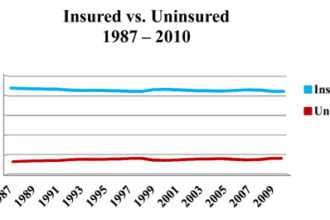HHS has issued a “guidance bulletin” which states how they intend to define the minimum “actuarial value” that health plans must meet starting in 2014. If a plan does not meet the minimum actuarial value, it cannot be sold in the individual or small group markets. Many advocates of HSAs and other consumer-driven plans have hoped that HHS’ definition of “actuarial value” would not preclude HSA-qualified insurance plans from being offered in the new state insurance exchanges.
HHS has issued a “guidance bulletin” which states how they intend to define the minimum “actuarial value” that health plans must meet starting in 2014. If a plan does not meet the minimum actuarial value, it cannot be sold in the individual or small group markets. Many advocates of HSAs and other consumer-driven plans have hoped that HHS’ definition of “actuarial value” would not preclude HSA-qualified insurance plans from being offered in the new state insurance exchanges. The guidance bulletin is a mixed bag for HSAs. On the one hand, HHS says it will allow employers to include contributions they make to employees’ HSAs (and HRAs) when determining the actuarial value of the plans they offer. This will help high deductible plans that make people eligible for HSAs qualify as “Bronze” and “Silver” plans.
But the bulletin (and regulations to come) need to go further. More below the fold.
First, the bulletin does not appear to allow HSA contributions made by employees via payroll deduction to be included in the determination of a plan’s actuarial value. This is unfortunate because these contributions are treated — for tax purposes — as “employer contributions” and are not taxed as wages subject to income and payroll taxes (i.e., “pre-tax”).
Second, the bulletin clearly states that HHS does not intend to include HSA contributions made by individuals that purchase insurance policies on their own (i.e., not through their employer) in the actuarial value of plans sold in the individual market. This will make it much more difficult for high deductible plans to meet the minimum actuarial value standard of 60 percent. If they can’t, these plans will either not be available, or these plans will have to raise their values by covering additional benefit expenses. This in turns means the premiums will have to be increased to cover the additional expenses, meaning HSA plans will not be as affordable as they are today.






